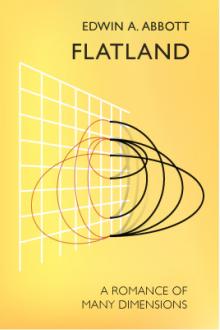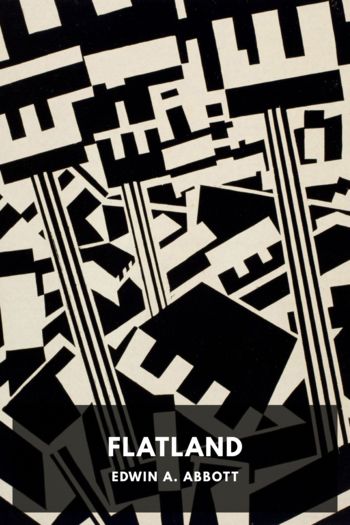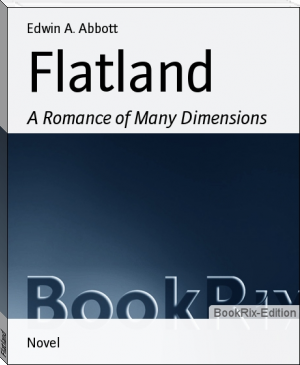author - "Edwin A. Abbott"

he Relative.
50. A statement may sometimes be briefly implied instead of being expressed at length.
51. Conjunctions may be omitted. Adverbs, e.g. "very," "so." Exaggerated epithets, e.g. "incalculable," "unprecedented."
51 a. The imperative may be used for "if &c."
52. Apposition may be used, so as to convert two sentences into one.
53. Condensation may be effected by not repeating (1) the common Subject of several Verbs; (2) the common Object of several Verbs or Prepositions.
54. Tautology. Repeating what may be implied.
55. Parenthesis maybe used with advantage to brevity. See 26.
56. Brevity often clashes with clearness. Let clearness be the first consideration.
CLEARNESS AND FORCE.
Numbers in brackets refer to the Rules.
WORDS.
*1. Use words in their proper sense.*
Write, not "His apparent guilt justified his friends in disowning him," but "his evident

true Dimension,although I cannot point out to you its direction, nor can youpossibly measure it.' What would you say to such a visitor?Would not you have him locked up? Well, that is my fate:and it is as natural for us Flatlanders to lock up a Squarefor preaching the Third Dimension, as it is for you Spacelandersto lock up a Cube for preaching the Fourth. Alas, how stronga family likeness runs through blind and persecuting humanityin all Dimensions! Points, Lines, Squares, Cubes, Extra-Cubes --we are all liable to the same errors, all alike the Slavesof our respective Dimensional prejudices, as one of yourSpaceland poets has said --
'One touch of Nature makes all worlds akin'."
[Note: The Author desires me to add, that the misconception of someof his critics on this matter has induced him to insert in hisdialogue with the Sphere, certain remarks which have a bearingon the point in question, and which he had previously omittedas being tedious and unnecessary.]
On this point th

Description
Flatland is uniquely both a social critique and a primer on multi-dimensional geometry. Written in two parts in 1884 by Edwin A. Abbott, an English mathematician and theologian, it tells the story of a square living in Flatland: a two-dimensional realm. After a dream of a restrictive one-dimensional existence and the difficulties this poses, he is visited by a sphere from a three-dimensional space who wishes to enlighten him into the ways of “Upward, yet not Northward.”
Edwin A. Abbott wrote other theological fiction and non-fiction (including several biographies), but he is best remembered for Flatland. While it was mostly forgotten after publication, it received a revived interest from the 1960s onwards, and has more recently had several sequels and film adaptations. This edition of is based on the second published edition and includes its preface, which in part attempts to address some of the contemporary accusations of misogyny.

he Relative.
50. A statement may sometimes be briefly implied instead of being expressed at length.
51. Conjunctions may be omitted. Adverbs, e.g. "very," "so." Exaggerated epithets, e.g. "incalculable," "unprecedented."
51 a. The imperative may be used for "if &c."
52. Apposition may be used, so as to convert two sentences into one.
53. Condensation may be effected by not repeating (1) the common Subject of several Verbs; (2) the common Object of several Verbs or Prepositions.
54. Tautology. Repeating what may be implied.
55. Parenthesis maybe used with advantage to brevity. See 26.
56. Brevity often clashes with clearness. Let clearness be the first consideration.
CLEARNESS AND FORCE.
Numbers in brackets refer to the Rules.
WORDS.
*1. Use words in their proper sense.*
Write, not "His apparent guilt justified his friends in disowning him," but "his evident

true Dimension,although I cannot point out to you its direction, nor can youpossibly measure it.' What would you say to such a visitor?Would not you have him locked up? Well, that is my fate:and it is as natural for us Flatlanders to lock up a Squarefor preaching the Third Dimension, as it is for you Spacelandersto lock up a Cube for preaching the Fourth. Alas, how stronga family likeness runs through blind and persecuting humanityin all Dimensions! Points, Lines, Squares, Cubes, Extra-Cubes --we are all liable to the same errors, all alike the Slavesof our respective Dimensional prejudices, as one of yourSpaceland poets has said --
'One touch of Nature makes all worlds akin'."
[Note: The Author desires me to add, that the misconception of someof his critics on this matter has induced him to insert in hisdialogue with the Sphere, certain remarks which have a bearingon the point in question, and which he had previously omittedas being tedious and unnecessary.]
On this point th

Description
Flatland is uniquely both a social critique and a primer on multi-dimensional geometry. Written in two parts in 1884 by Edwin A. Abbott, an English mathematician and theologian, it tells the story of a square living in Flatland: a two-dimensional realm. After a dream of a restrictive one-dimensional existence and the difficulties this poses, he is visited by a sphere from a three-dimensional space who wishes to enlighten him into the ways of “Upward, yet not Northward.”
Edwin A. Abbott wrote other theological fiction and non-fiction (including several biographies), but he is best remembered for Flatland. While it was mostly forgotten after publication, it received a revived interest from the 1960s onwards, and has more recently had several sequels and film adaptations. This edition of is based on the second published edition and includes its preface, which in part attempts to address some of the contemporary accusations of misogyny.
